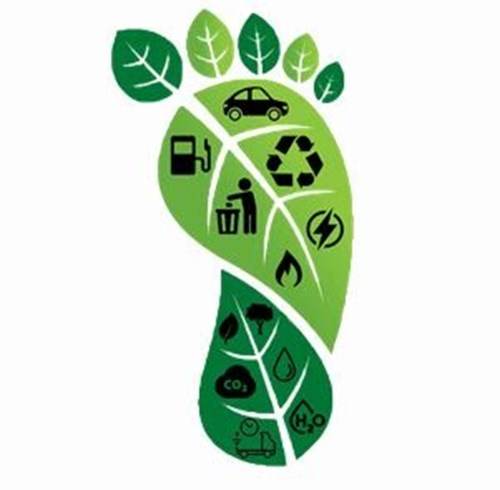Improving Our Carbon Footprint
As the climate emergency continues we wanted to understand where HappyPorch could make improvements to decrease our company overall carbon footprint. But in order to do that we first have to find out what our current carbon footprint actually is.
Inspired by the amazing Wholegrain Digital carbon footprint post, this year we started with a project to measure our carbon footprint and come up with a framework that allows us to regularly monitor this in the future as well.
We enlisted the help of Jack O'Donoghue, a freelance sustainability consultant who has experience of helping organisations measure and understand their carbon footprint.
Data Gathering
The first step was for us to gather data about all our activities to contribute to our carbon footprint.
We decided to focus on the period of April 2018 until the end of March 2019. This matches the UK tax year, which means it combines nicely with our other annual reports. And because that year had already completed it would be easier for us to gather all the data and run a full carbon footprint report.
Since we’re a fully remote company we haven’t got some of the more ‘traditional’ carbon costs like running an office. But that doesn’t mean we ignore that completely.
Each of our team members still uses a laptop and other equipment that uses electricity. And for those of us who work from home, most of us still have to heat our homes during autumn and winter.
Together with Jack we came up with a list of categories that we wanted each team member to look at:
- Home energy consumption: electricity and gas usage, offset for the average working week.
- Equipment usage: this includes any laptops, PCs, secondary monitors and other equipment used for work on a regular basis.
- Commuting: some of us choose to work from a co-working space on a regular basis, so the commuting from and to these spaces would be included as well.
- Team meetups: twice a year we try to have a team gathering somewhere in Europe. The travel and accommodation choices will be part of our carbon footprint as well.
And then there were a few general company categories as well that we wanted to look at:
- Servers and websites: looking at the carbon impact of the servers where we host our own websites.
- Equipment purchases: not only the use of equipment like laptops contributes to the carbon footprint, but also the purchase of a new product has a carbon impact.
- Business trips: sometimes we have to travel for client meetings, so these trips should be included in the company carbon footprint as well.
Based on these categories Marina and Jack worked together to create a spreadsheet that could be used to capture the information. Each team member then was asked to go through it and provide as much information as possible for each category.

To make sure our carbon footprint calculation would be as accurate as possible, the sheet asked for some really specific details like the mode of transport for each leg of a journey, and the percentage of home energy usage coming from renewable energy sources.
Calculations
When all the data had been gathered it was time to do the calculations. Jack helped us set up a spreadsheet to do these calculations, which takes each item entered and calculates the carbon footprint of each one.
To get a unified number the carbon footprint of each reported item needs to be calculated as kgCO2e, which stands for the carbon dioxide equivalent and is a unit that should take into account all greenhouse gas emissions for an activity and convert them to the carbon dioxide equivalent to get a single number.
For each activity source (transport mode, energy source, etc.) we had an emission factor (e.g. kgCO2e/km for transport modes) that we used to calculate to the totals. The emission factors can be found in documentation that is published by governments and institutes in the countries where the emissions are being produced (and often get updated annually).
Once we had those figures calculated it was time to get them grouped in different scopes, depending on how those emissions were generated. The scopes used come from the internationally recognised Greenhouse Gas Accounting and Reporting principles:
- Scope 1 - Direct Emissions: Activities owned or controlled by the organisation that release the emissions.
- Scope 2 - Indirect Emissions: Emissions being released into the atmosphere associated with the consumption of purchased electricity, heat, steam and cooling.
- Scope 3 - Other Indirect Emissions: Emissions that are a consequence of your actions, which occur at sources which you do not own or control and which are not classed as scope 2 emissions (e.g. travel).
And those scope totals then can be added up into our total company carbon footprint.
Results
So how did we do?

Between April 2018 and the end of March 2019 the total carbon footprint was: 17,382 kgCO2e.
When we break that down per scope it looks like this:
- Scope 1: 0 (we don’t have any energy sources ourselves).
- Scope 2: 1,051 kgCO2e (this includes energy usage during meetups and equipment use).
- Scope 3: 16,331 kgCO2e (this includes home energy usage and travel).
This didn’t really come as a surprise to us. Even though we are a remote company and work from home (or locally) most of the time, the two annual meetups mean that the whole team will travel to a location in Europe which most of the time involves a flight (or two for some of our intercontinental team members).
Going Forward
Now that we have an actual figure and understanding of our company carbon footprint it means we can act on it to try and improve it.
Reduction
We’re still in the process of working on this, but some of the actions we have taken so far are:
- Use the above method to track our ongoing carbon footprint for the current tax year which will allow us to compare it quickly to the previous year(s).
- Out of the two annual meetups we will make sure that at least one of them will be held in the UK. Since we have more team members based in the UK it will allow them to travel to the meetup without flying.
And for the other meetup we will try to choose a location in Europe that requires the least amount of flights (so ideally direct flights only) and has the option for some team members to travel there by cleaner means of transport like the train. - When buying new equipment we try to buy refurbished products first.
Hopefully these steps will help us reduce our carbon footprint over the next few years.
Offsetting
There are a lot of challenges with offsetting, but the reality is that it is an important step - so long as we don’t let it limit our efforts to reduce. We were also really intrigued by the concept of Carbon Syncing proposed by Tom at WholeGrain Digital, maybe that is something we’ll come back to next year.
- We have offset our carbon footprint for the 2018-2019 tax year by contributing to the carbon offset programme of ClimateCare and also by starting a grove of trees in the Scottish Highlands with a rewilding project by Trees For Life (so effectively we have offset our carbon footprint for the year twice).
It definitely has been an interesting experience for everyone to gather the data and think more about the choices we make as a team.

